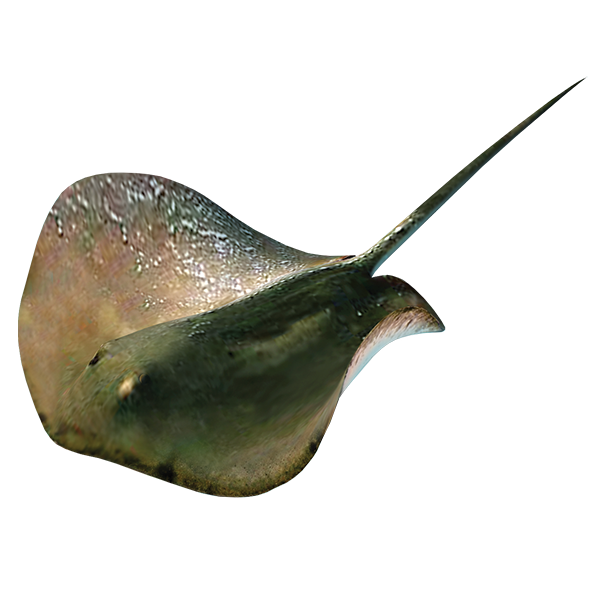Dasyatis americana
Southern Stingray
Maximum Size:
6.5 ft (2 m) disk diameter; 300 lb (136 kg)
Longevity:
25 years or more.
Typical depth:
0–170 ft (0–53 m)
Behavior:
Stingrays are most active at night, when they hunt for hard-shelled prey such as snails, crabs, lobsters and occasionally fish. During the day they are often found buried up to their eyes in sand.
Predators:
Sharks (particularly hammerhead sharks) and large grouper.
Did you know?
The venom in the stingray’s tail contains agents that cause severe pain and tissue breakdown, and which can lead to severe infection.
WARNING!
Stingrays have a serrated venomous spine at the base of their tail, which they use to defend themselves. The area around the wound may become red and swollen, and you may experience muscle cramps, nausea, fever and chills.
TREATMENT
If you are stung, exit the water immediately. Apply pressure above the wound to reduce bleeding, clean the wound and soak the area with hot water, ideally around 113°F (45°C), to reduce the pain. Apply a dressing and seek medical attention. Antibiotics may be needed to reduce the risk of infection. Stingray injuries can be very painful, often reaching a peak around one hour after the injury and lasting up to two days. But they are rarely fatal unless the injury is to the head, neck or abdomen.
MEDICAL DISCLAIMER
The treatment advice contained in this book is meant for informational purposes only and is not intended to be a substitute for professional medical advice, either in terms of diagnosis or treatment. Always seek the advice of your physician or other qualified health provider if you are injured by a marine organism. Never disregard professional medical advice or delay seeking it because of something you have read in this book.

